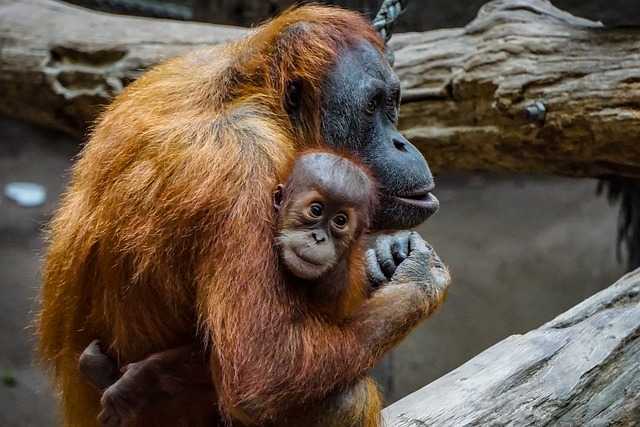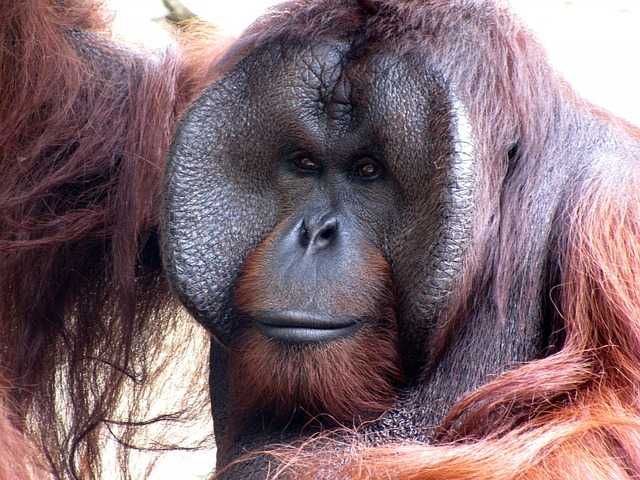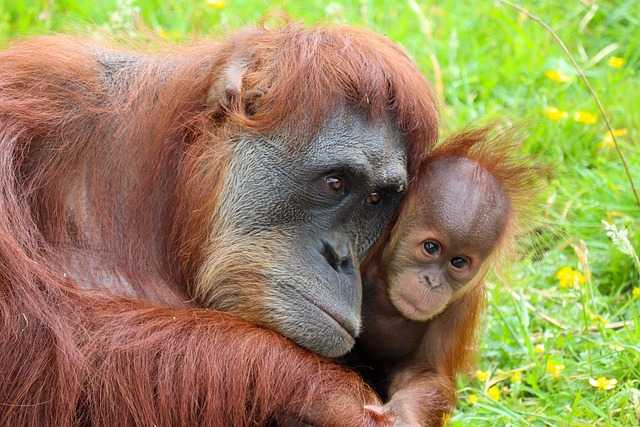Orangutans are great apes native to the rainforests of Indonesia and Malaysia. They are now found only in parts of Borneo and Sumatra, but during the Pleistocene they ranged throughout Southeast Asia and South China. Classified in the genus Pongo, orangutans were originally considered to be one species.
Lifespan: Bornean orangutan: 35 – 45 years
Height: Bornean orangutan: 1.2 – 1.4 m, Sumatran orangutan: 1.4 – 1.8 m
Scientific name: Pongo
Gestation period: Bornean orangutan: 259 days Encyclopedia of Life
Family: Hominidae
Infraorder: Simiiformes

List of facts
Orangutans are great apes native to the rainforests of Indonesia and Malaysia.
The apes are known as maias in Sarawak and mawas in other parts of Borneo and in Sumatra
In central Borneo, some traditional folk beliefs consider it bad luck to look an orangutan in the face
They are now found only in parts of Borneo and Sumatra
Adult males weigh about 75 kg , while females reach about 37 kg
They can live over 30 years, both in the wild and in captivity.
Fruit is the most important component of an orangutan’s diet; but they will also eat vegetation, bark, honey, insects and bird eggs.
Orangutans are the most solitary of the great apes: social bonds occur primarily between mothers and their dependent offspring

There are 3 species the Bornean orangutan, the Sumatran orangutan and a third species, the Tapanuli orangutan
All three orangutan species are considered critically endangered.
Orangutans have reddish-brown hair covering their bodies.
The name “orangutan” is derived from the Malay words orang, meaning “person”, and hutan, meaning “forest”
Orangutan hands have four long fingers but a dramatically shorter opposable thumb for a strong grip on branches
Most of the day is spent feeding, resting, and travelling
Orangutans build nests specialised for either day or night use.
From six months of age onwards, orangutans practice nest-building and gain proficiency by the time they are three years old
Orangutans are primarily fruit-eaters, which can take up 57–80% of their foraging time.
These apes don’t walk on their knuckles as gorillas do. Instead, they curve their fingers in and use the palms of their hands for balance and movement.
The orangutan shares no less than 97 percent of its DNA with humans.
The largest remaining species of orangutans is the Bornean species but there is estimated to be only between 50,000 and 100,000 orangutans in the wild in Borneo today.
The females usually reproduce once every six to eight years, the orangutan typically has only one offspring
Less than 800 Tapanuli orangutan are estimated to still exist, which puts the species among the most endangered of the great apes.
The orangutan infant is dependent on its mother for up to eight years after its birth
A wild orangutan can live for up to 45 years
An orangutan in captivity can live for up to 60 years
They can produce a wide range of sounds for communication.

Male orangutans develop large cheek pads which attract females. These pads grow their entire life.
An Orangutan baby will cry when it is hungry and it will whimper when it is hurt.
The Jungle Book added a jazzy orangutan named King Louie, who tries to get Mowgli to teach him how to make fire
Orangutans communicate with various vocals and sounds. Males will make long calls, both to attract females and to advertise themselves to other males
Orangutans use a variety of sophisticated tools and construct elaborate sleeping nests each night from branches and foliage.
